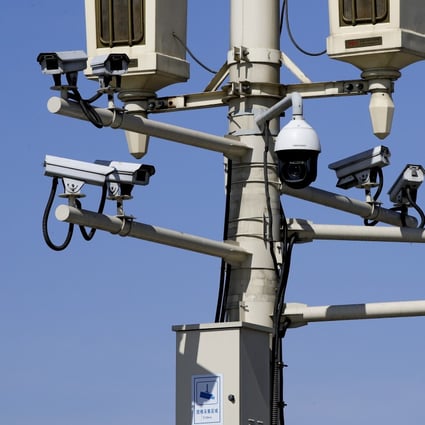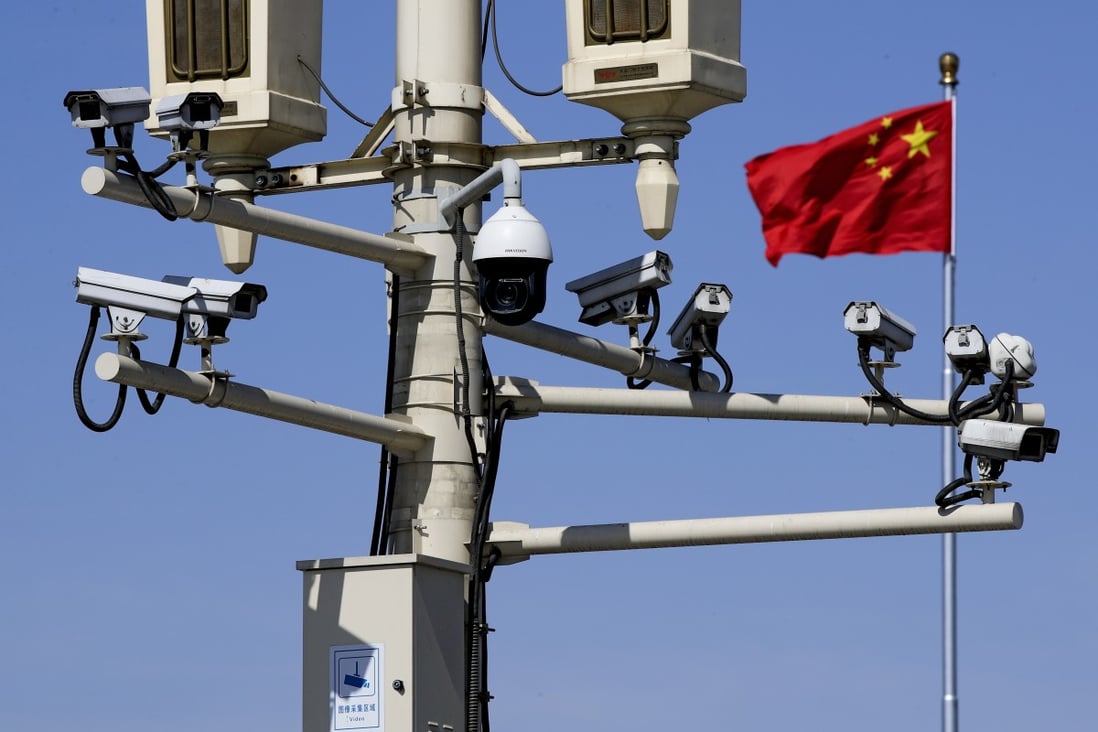Surveillance cameras mounted on a lamp post in Tiananmen Square in Beijing. Photo: AP
Inside China Tech: How facial recognition technology facilitates China’s surveillance
- State surveillance camera makers largely benefited from the rise in demand for the technology after 9/11 terror attacks
Surveillance cameras mounted on a lamp post in Tiananmen Square in Beijing. Photo: AP




